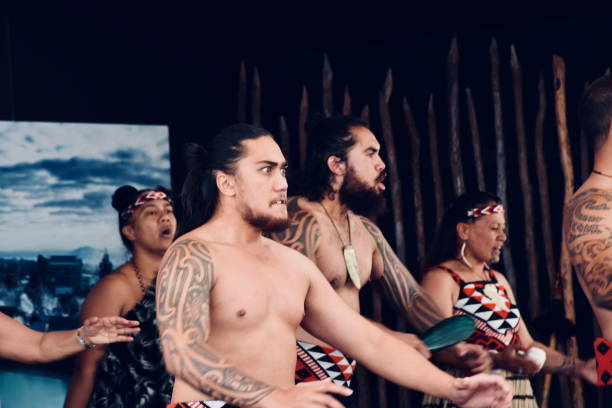The Maori language, known as Te Reo, is not just a means of communication but a bridge to understanding the rich cultural heritage of New Zealand’s indigenous people. One fundamental aspect of daily life in any culture is the days of the week, and in Maori culture, these are known as “Nga Ra o Te Wiki.” This article delves into each Maori day of the week, offering insights into their significance and usage in both historical and contemporary contexts.
Understanding Nga Ra o Te Wiki
The Maori days of the week are deeply rooted in both the natural environment and the cosmology of the Maori people. Unlike the Gregorian calendar, which names days after planets and historical figures of Roman mythology, the Maori names for the days of the week reflect nature and everyday life.
Cultural Significance of Maori Days of the Week
In traditional Maori society, the days of the week were not merely units of time but carried profound cultural meanings and implications. These days were intricately woven into the fabric of Maori life, dictating the timing of various activities and rituals, and reflecting the Maori worldview’s cyclical nature.
Traditional Maori Days of the Week
In traditional Maori culture, each day of the week held its own significance, often associated with celestial bodies, deities, or natural phenomena. Here is a breakdown of the traditional Maori days of the week:
- Rāhina (Monday): Known as the “first day” or the “day of the moon,” Rāhina marks the beginning of the lunar cycle. It is a time for new beginnings and planning.
- Rātū (Tuesday): Referred to as the “second day” or the “day of Rongo,” Rātū is associated with Rongo, the god of cultivated food. This day is ideal for planting, harvesting, and agricultural activities.
- Rāapa (Wednesday): Known as the “third day” or the “day of the sun,” Rāapa is associated with the sun, symbolizing warmth and vitality. It is a suitable time for outdoor activities such as fishing and gathering.
- Rāpare (Thursday): Referred to as the “fourth day” or the “day of stars,” Rāpare is associated with celestial navigation and exploration. It is a time for journeying and discovery.
- Rāmere (Friday): Known as the “fifth day” or the “day of the trees,” Rāmere is associated with trees and the natural world. It is a time for woodwork, construction, and connecting with nature.
- Rāhoroi (Saturday): Referred to as the “sixth day” or the “day of leisure,” Rāhoroi is a time for relaxation, leisure, and communal gatherings. It is a day to unwind and socialize.
- Rātapu (Sunday): Known as the “day of sacredness” or the “day of rest,” Rātapu is considered sacred and reserved for rest, reflection, and spiritual activities. Certain tasks are considered taboo on this day.
Contemporary Significance
In modern New Zealand, there is a concerted effort to revitalize the Maori language and culture, with the Maori days of the week playing a central role in this endeavor.
- Education: Schools across New Zealand integrate Maori language and culture into their curriculum, including the Maori days of the week. Students learn about the cultural significance of each day and its relevance to traditional Maori practices.
- Media and Broadcasting: Public broadcasters incorporate Maori language and cultural elements into their programming, including the use of Maori days of the week in weather forecasts, news segments, and community announcements. This exposure helps familiarize the general population with Maori language and culture.
- Cultural Events: Festivals, ceremonies, and cultural gatherings often incorporate the Maori days of the week into their schedules and rituals. This inclusion not only honors Maori traditions but also provides opportunities for people of all backgrounds to engage with and learn about Maori culture.
Learning and Using Te Reo: The Maori Days of the Week

For those learning Te Reo, incorporating the Maori days of the week into daily use can be a practical and rewarding approach. Here are some tips on how to start:
- Start Simple: Begin by replacing the English days of the week with Maori in your calendar or diary.
- Practice Regularly: Use the Maori days of the week in conversation, especially when planning meetings or events.
- Cultural Integration: Participate in events that encourage the use of Te Reo to deepen your understanding and respect for Maori culture.
Conclusion
Exploring the Maori days of the week opens a window into the cultural depth of New Zealand’s indigenous people. Whether used in everyday communication or in educational settings, “Nga Ra o Te Wiki” are vital components of the Maori heritage, symbolizing more than just the passage of time—they represent a living culture and a continual connection to the past. As New Zealand society moves forward, the integration of the Maori days of the week serves as a reminder of the importance of preserving and respecting the Maori language and culture.
FAQ
A1: The Maori days of the week are closely linked to nature and the environment, reflecting the Maori worldview that emphasizes harmony with the natural world.
A2: Traditionally, certain days were considered more auspicious for specific activities, such as planting or fishing, based on lunar and environmental cycles.
A3: Learning the Maori days of the week helps promote cultural understanding and appreciation, besides supporting the revitalization of an indigenous language.
A4: Many educational resources are available online, and community classes often include segments on understanding and using the Maori days of the week effectively.
A5: They are increasingly incorporated into official documents, educational curricula, and public media to enhance cultural inclusivity and language preservation.
